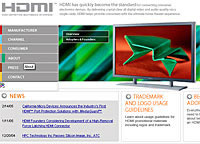 Silicon Image has introduced its new Sil 1390 and 1920 transmitters, chip-based platforms capable of transmitting Intel’s SDVO (Serial Digital Video Output) and HDMI (High-Definition Multimedia Interface), respectively.
Silicon Image has introduced its new Sil 1390 and 1920 transmitters, chip-based platforms capable of transmitting Intel’s SDVO (Serial Digital Video Output) and HDMI (High-Definition Multimedia Interface), respectively.
HDMI is being pushed by the content industry as the ‘upgrade’ of DVI (Digital Visual Interface). Sure, HDMI offer a few more features, like integrating eight-channel Audio and HD Video carried on a single cable, and acting as a conduit to pass remote control signals around, but the main reason for enthusiastic support is HDCP.
In this ever expanding lexicon, why is HDCP important? High-Definition Content Protection keeps digital video and audio encrypted through out the digital distribution chain, up to the point it hits your eyeballs and ears. This is to stop the naughty people that might want to save the content they’re paying for (heaven forbid).
Capitalising on growing sales of Media Center PCs and the growing availability of High Definition content for PC platforms, Silicon Image’s new series of HDMI transmitters targeted at PCs are the first integrated solution designed to interface directly to the video and audio interfaces of PC platforms. Out of interest, Silicon Image is one of the founders of the HDMI standard.
Silicon Image has also introduced the SiI 1368, billed as (take a deep breath, folks) the industry’s first Digital Visual Interface High-bandwidth Digital Content Protection (DVI-HDCP) transmitter designed for PCI-Express graphics chipsets supporting Intel’s Serial Digital Video Output (SDVO) interface.
All three transmitters support the full 25-165 MHz HDMI and DVI bandwidth. The SiI 1390 and SiI 1930 transmitters also support a wide variety of audio interfaces-including HD-Audio, SPDIF and three I2S channels-to ensure compatibility with a broad range of PC audio hardware platforms.
“As PC users gain access to HD content, secure content delivery on PC platforms will be an important issue,” said Neerav Shah, president of Digital Content Protection, LLC, the licensor of HDCP.
“HDCP already has the support of content providers in the consumer electronics market and has emerged as an important technology in enabling consumers to access HD content.
We expect HDCP will similarly become a requirement on PC platforms capable of receiving and playing HD content. As a contributor to the HDCP specification and having developed HDCP test protocols for its PanelLink Cinema Partners test center, Silicon Image can help enable PC platforms to access the growing volume of HD content.
With the availability of new HD content and the popularity of Microsoft’s Windows Media Center Edition (with integrated HDTV support), the market for entertainment PCs is projected to grow from 7.9 million in 2004 to 59 million in 2008.
 You may think, “what do we need another effing’ cable for?” but with more HD content becoming available, the PC market will require PCs to support HDMI or DVI with HDCP in order to access this content.
You may think, “what do we need another effing’ cable for?” but with more HD content becoming available, the PC market will require PCs to support HDMI or DVI with HDCP in order to access this content.
With its single cable coupling multi-channel audio and uncompressed HD video and small connector, HDMI is poised to become the de facto multimedia interface for both PCs and consumer electronics devices-enabling PCs with true entertainment and multimedia functionality.
“All the signs indicate that 2005 will mark the year HDMI gains a foothold in PC platforms,” stated Joe Lee, Silicon Image director of product marketing, PC and display products.
“Our family of new HDMI products for the PC supports our corporate strategy of enabling secure delivery of digital content on any and all platforms, including Windows Media Center and other Intel architected desktop PCs, notebooks, set-top boxes and media adapters.”
Silicon Image, HDMI Standards
Silicon Image Press Release
hdmi.org
 Digital television continued to grow in Europe last year, according to a Strategy Analytics’ survey of more than 70 digital television operators across 16 countries.
Digital television continued to grow in Europe last year, according to a Strategy Analytics’ survey of more than 70 digital television operators across 16 countries. ![]() IPTV is expected to have become an established fourth digital platform by that time, with an estimated 11.3 million subscribers.
IPTV is expected to have become an established fourth digital platform by that time, with an estimated 11.3 million subscribers.  The Advertising Standards Authority (ASA) has dished out a mixed ruling on a complaint about claims made by Bulldog (owned by Cable & Wireless) for its 4Mbps broadband service.
The Advertising Standards Authority (ASA) has dished out a mixed ruling on a complaint about claims made by Bulldog (owned by Cable & Wireless) for its 4Mbps broadband service.  Bulldog seems to have become unstuck by the success of their own advertising, with customers instantly clambering for a piece of the ‘ultimate broadband experience’.
Bulldog seems to have become unstuck by the success of their own advertising, with customers instantly clambering for a piece of the ‘ultimate broadband experience’. 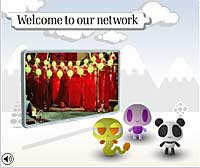 After a shaky start, the 3G bandwagon is finally starting to roll with 20 million 3G phones sold last year and shedloads of new funky, feature-packed phones on the way.
After a shaky start, the 3G bandwagon is finally starting to roll with 20 million 3G phones sold last year and shedloads of new funky, feature-packed phones on the way. 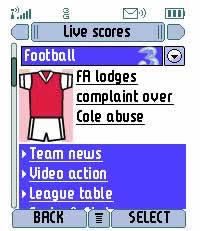 “We’re very much at the foothills regarding content on mobiles,” says Price. “Now we’re going to have to be a bit more experimental and different. The network owners are looking for something that pushes the boundaries a bit more and gives them more of a reason to develop content off the back of existing [brands] or to think about commissioning new content.”
“We’re very much at the foothills regarding content on mobiles,” says Price. “Now we’re going to have to be a bit more experimental and different. The network owners are looking for something that pushes the boundaries a bit more and gives them more of a reason to develop content off the back of existing [brands] or to think about commissioning new content.” 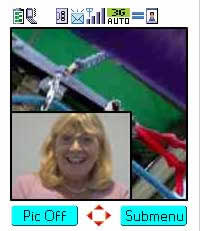 Right now, they’re not interested in arty-farty experimental stuff, out-there comedy or ‘genre-challenging’ downloads: they want straight down-the-line popular content that will shift phones and entice new subscribers by the bucketload.
Right now, they’re not interested in arty-farty experimental stuff, out-there comedy or ‘genre-challenging’ downloads: they want straight down-the-line popular content that will shift phones and entice new subscribers by the bucketload. 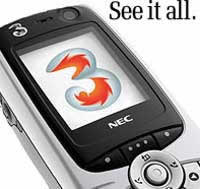 The end result is a predictable but unit-shifting fare of footie, ringtones, horoscopes, weather and the like.
The end result is a predictable but unit-shifting fare of footie, ringtones, horoscopes, weather and the like.  Sky has for quite a long time been evaluating the best CoDEC for their High-Definition TV (HDTV) service. They currently deliver their content using an MPEG-2, which given the extra bandwidth that HD requires would make the demand on satellite bandwidth too high.
Sky has for quite a long time been evaluating the best CoDEC for their High-Definition TV (HDTV) service. They currently deliver their content using an MPEG-2, which given the extra bandwidth that HD requires would make the demand on satellite bandwidth too high.  Skype has announced a new partnership with Broadreach Networks which is giving UK Skype users free Wi-Fi access to make free Skype calls in 350 Internet locations across the UK.
Skype has announced a new partnership with Broadreach Networks which is giving UK Skype users free Wi-Fi access to make free Skype calls in 350 Internet locations across the UK.  For Skype to be really useful for end-users, you have to be able to use it when you are out, and in more and more places. Combination of WiFi and Skype is a good synergy; make free wireless calls.”
For Skype to be really useful for end-users, you have to be able to use it when you are out, and in more and more places. Combination of WiFi and Skype is a good synergy; make free wireless calls.” 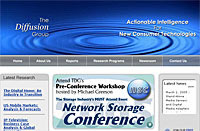 Evidence is beginning to amass that two of the most hyped products in the early digital home market will be lucky if they manage to reach niche market status in the next few years.
Evidence is beginning to amass that two of the most hyped products in the early digital home market will be lucky if they manage to reach niche market status in the next few years.  Hitachi has announced that it will ramp up its output of consumer hard drives this year as it strives to take advantage of the soaring storage demands of MP3, PVR and mobile phone markets.
Hitachi has announced that it will ramp up its output of consumer hard drives this year as it strives to take advantage of the soaring storage demands of MP3, PVR and mobile phone markets. 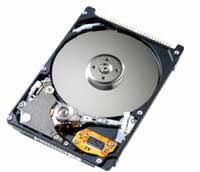 A smaller version of the current 1-inch drive, code-named Mikey, comes out later this year, with capacious 2.5-inch drives – holding up to 500GB – being targeted at makers of DVRs and home servers.
A smaller version of the current 1-inch drive, code-named Mikey, comes out later this year, with capacious 2.5-inch drives – holding up to 500GB – being targeted at makers of DVRs and home servers. 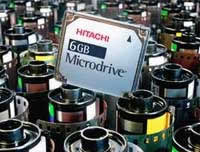 “Hitachi’s intensified focus in the CE segment hard drive will mean good news for end-users as we work on developing smaller, high-capacity hard drives that are more rugged, require less power and cost less.”
“Hitachi’s intensified focus in the CE segment hard drive will mean good news for end-users as we work on developing smaller, high-capacity hard drives that are more rugged, require less power and cost less.”  Microsoft co-founder and chairman, Bill Gates received an honorary knighthood from ‘er Majesty the Queen today.
Microsoft co-founder and chairman, Bill Gates received an honorary knighthood from ‘er Majesty the Queen today. 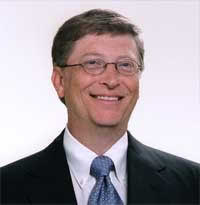 Gates and his wife Melinda are well known for their charitable work, investing millions in research for an Aids vaccine and a scholarship scheme to enable the brightest students to go to Cambridge University.
Gates and his wife Melinda are well known for their charitable work, investing millions in research for an Aids vaccine and a scholarship scheme to enable the brightest students to go to Cambridge University.  TowerStream, a US provider of fixed-wireless broadband services has announced the successful completion of Mobile Voice over IP (VoIP) over a WiFi network.
TowerStream, a US provider of fixed-wireless broadband services has announced the successful completion of Mobile Voice over IP (VoIP) over a WiFi network.